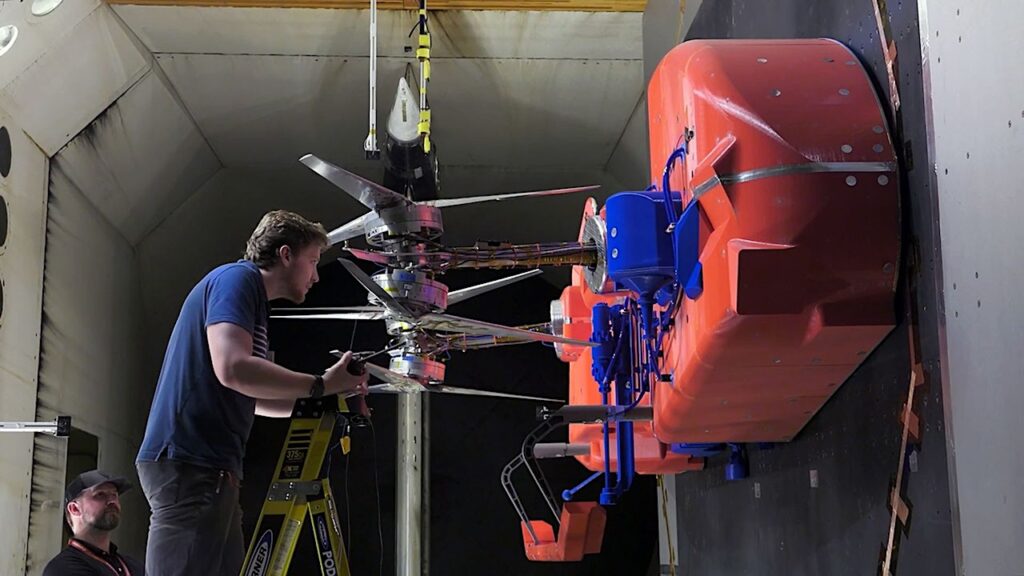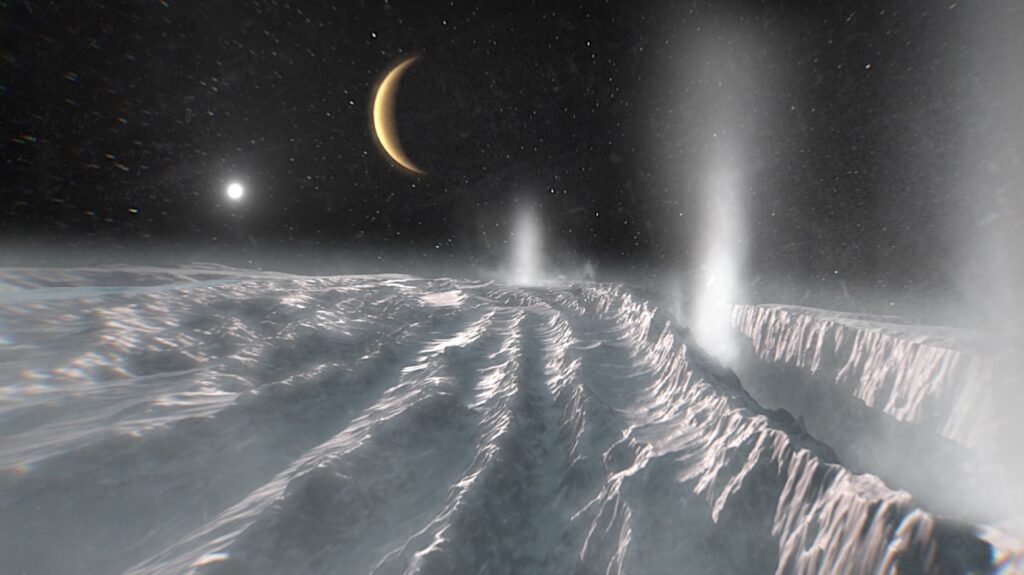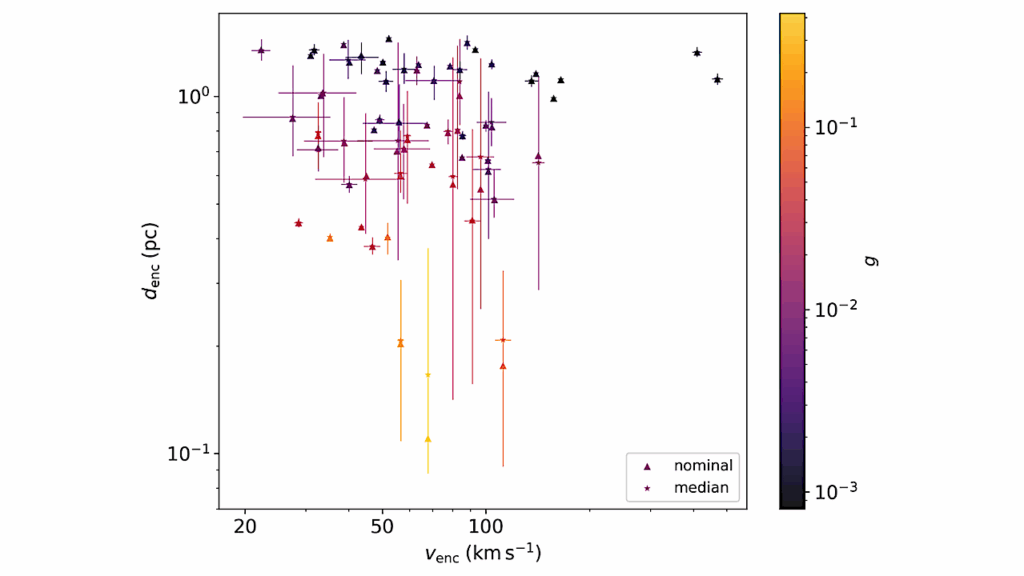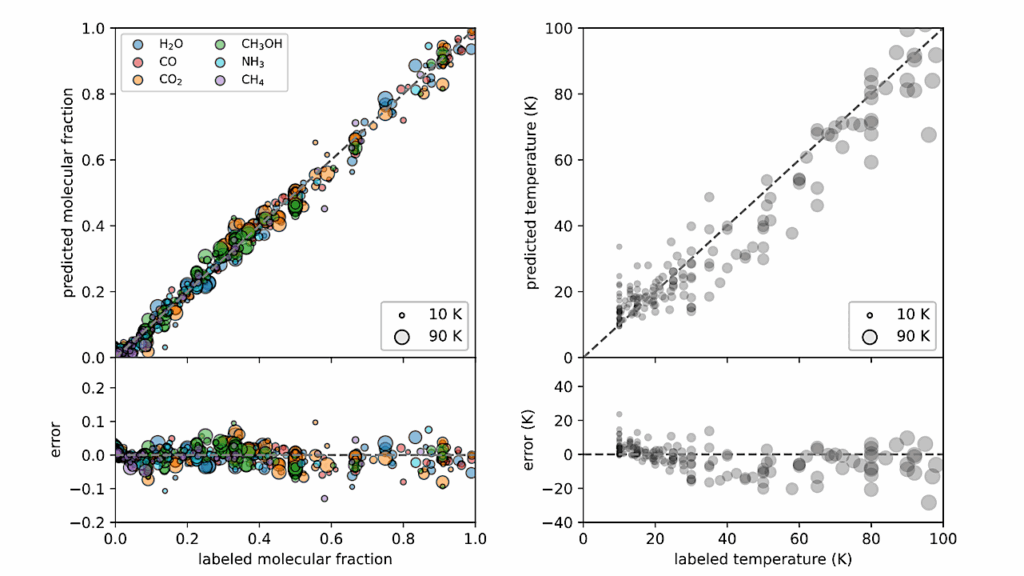A Yebes W band Line Survey Towards an Unshocked Molecular Cloud of Supernova Remnant 3C391: Evidence of Cosmic-Ray-Induced Chemistry
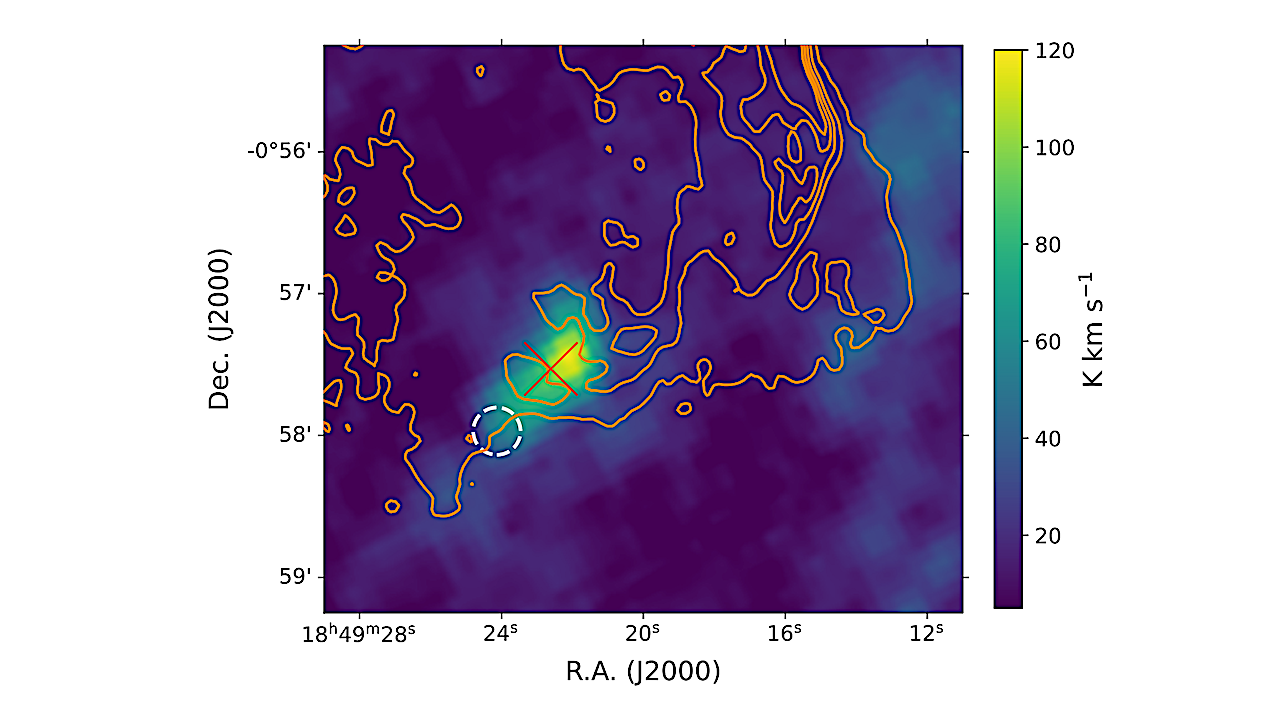
Cosmic rays (CRs) have strong influences on the chemistry of dense molecular clouds (MCs). To study the detailed chemistry induced by CRs, we conducted a Yebes W band line survey towards an unshocked MC (which we named as 3C391:NML) associated with supernova remnant (SNR) 3C391.
We detected emission lines of 18 molecular species in total and estimated their column densities with local thermodynamic equilibrium (LTE) and non-LTE analysis.
Using the abundance ratio N(HCO+)/N(CO) and an upper limit of N(DCO+)/N(HCO+), we estimated the CR ionization rate of 3C391:NML is ζ≳2.7×10−14 s−1 with an analytic method. However, we caution on adopting this value because chemical equilibrium, which is a prerequisite of using the equations, is not necessarily reached in 3C391:NML.
We observed lower N(HCO+)/N(HOC+), higher N(HCS+)/N(CS), and higher X(l-C3H+) by an order of magnitude in 3C391:NML than the typical values in quiescent dense MCs. We found that an enhanced CR ionization rate (of order ∼10−15 or ∼10−14 s−1) is needed to reproduce the observation with chemical model. This is higher than the values found in typical MCs by 2–3 orders of magnitude.

Full spectrum in the entire frequency range covered by eight spectrometers. Every two adjacent spectrometers have overlaps in frequency. The detected species and strong artifacts are marked in blue. — astro-ph.GA
Tian-Yu Tu, Prathap Rayalacheruvu, Liton Majumdar, Yang Chen, Ping Zhou, Miguel Santander-García
Comments: 18 pages, 7 figures, accepted for publication in ApJ
Subjects: Astrophysics of Galaxies (astro-ph.GA)
Cite as: arXiv:2408.15175 [astro-ph.GA] (or arXiv:2408.15175v1 [astro-ph.GA] for this version)
https://doi.org/10.48550/arXiv.2408.15175
Focus to learn more
Submission history
From: Tianyu Tu
[v1] Tue, 27 Aug 2024 16:13:56 UTC (2,450 KB)
https://arxiv.org/abs/2408.15175
Astrobiology, Astrochemistry,


